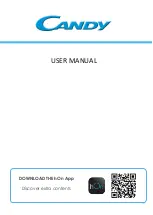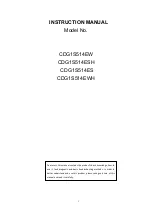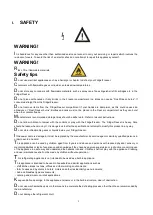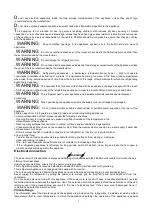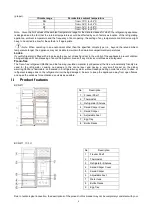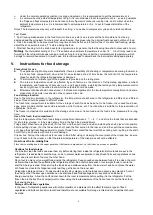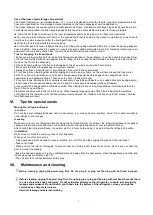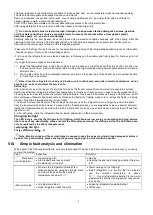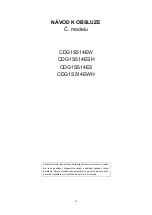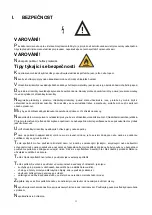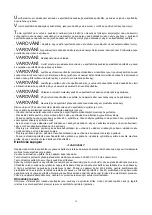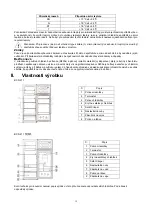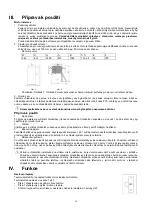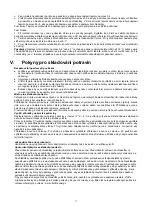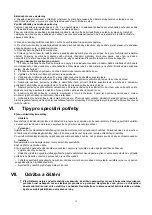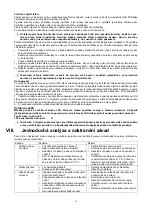
6
Under the normal operating condition (in spring and autumn), it is recommended to set the temperature at 4 .
In summer when the ambient temperature is high, it is recommended to set temperature at 3-4 , so as to guarantee
the fridge and freezer temperatures and reduce the refrigerator continuous running time; and in winter when the
ambient temperature is low, it is recommended to set temperature at 5-6 to avoid frequent start/stop of the
refrigerator.
Notes:The temperatures may vary with respect to setting
’
s ones due to compressor cycles and outside conditions.
Fast Freeze
1. Fast freezing makes water in the food form into fine ice crystal, so as to prevent the cell membrane from being
damaged and the cytoplasm from being lost when thawing, thus preserving the original freshness and nutrition of food.
2. Fresh food and fish to be preserved for a long time should be frozen in a fast manner. To realize fast freezing, please
adjust the knob switch to mode "7" before adding the food.
3. After fast freezing, turn the knob back to its original mode (In general, the fast freezing time shall not exceed 4 hours).
Notes
:
The thermostat setting of '6' or '7' is suitable when ambient temperature is under 16
°
C, but it may lead to ice
formation if the refrigerator keeps running at such setting for a long time under the normal ambient temperature, which
belongs to normal phenomenon. In such case, it is recommended to adjust back the thermostat setting appropriately.
V.
Instructions for food storage
Precautions for use
The appliance might not operate consistently (there is possibility of defrosting or temperature becoming too warm in
the frozen food compartment) when sited for an extended period of time below the cold limit of the temperature
range for which the refrigerating appliance is designed
The information of climate type of the appliance is provided on the rating plate.
The internal temperature could be affected by such factors as the location of refrigerating appliance, ambient
temperature, and frequency of door open, etc., and if appropriate, a warning that setting of any temperature control
device might have to be varied to allow for these factors should be made.
Effervescent drinks should not be stored in the freezer compartment or the low-temperature compartment, and some
products such as water ices should not be consumed too cold.
Food storage location
Due to the cold air circulation in the refrigerator, the temperature of each area in the refrigerator is different, so different
kinds of food should be placed in different areas.
The fresh food compartment is suitable for the storage of such foods as need not to be frozen, the cooked food, beer,
eggs, some condiments that need cold preservation, milk, fruit juice, etc. The crisper box is suitable for the preservation of
vegetables, fruits, etc.
The freezer compartment is suitable for the storage of ice cream, frozen food and the foods to be preserved for a long
time.
Use of the fresh food compartment
Set the temperature of the fresh food storage compartment between 2
℃
~ 8
℃
, and store the foods that are intended
for short-term storage, or to be eaten at any time in the fresh food compartment.
Fridge shelf: When removing the shelf, lift it up first, and then pull it out; and when installing the shelf, place it into position
before putting it down. (For the two-section shelf, push the first section to the rear end, and then pull the second section
out). Keep the shelf rear flange upward, to prevent foods from contact the liner wall. When taking out or putting in the shelf,
hold it firmly, and handle with care to avoid damage.
Crisper box: Pull out the crisper box for access to food. After using or cleaning the cover plate of the crisper box, be sure
to put it back onto the crisper, so that the internal temperature of the crisper box will not be affected.
How to use the ice-making box
Place the ice-making box in the upper position of the freezer compartment, so that it ices up as soon as possible
.
Cautions for food storage
You’d better clean the foods and wipe them dry before storing them inside the refrigerator. Before foods are put in the
refrigerator, it is advisable to seal them up, so as to prevent water evaporation to keep fresh fruits and vegetables on one
hand, and prevent taint of odor on the other hand.
Do not put too many or too weight foods inside the refrigerator. Keep enough space between foods; if too close, the cold
air flow will be blocked, thus affecting the refrigeration effect. Do not store excessive or overweight foods, to avoid the
shelf from being crushed. When storing the foods, keep a distance away from the inner wall; and do not place the water-
rich foods too close to the fridge rear wall, lest they get frozen on the inner wall.
Categorized storage of foods
:
Foods should be stored by category, with the foods you eat every day placed in front of
the shelf, so that the door open duration can be shortened and food spoilage due to expiration can be avoid.
Energy-saving tips: Allow the hot food cool down to the room temperature before putting it in the refrigerator. Put the
frozen food in the fresh food compartment to thaw, using the low temperature of the frozen food to cool the fresh food,
thus saving energy.
Storage of fruits and vegetables
In the case of refrigerating appliances with chill compartment, a statement to the effect that some types of fresh
vegetables and fruits are sensitive to cold and therefore are not suitable for storage in this kind of compartment should
be made.

